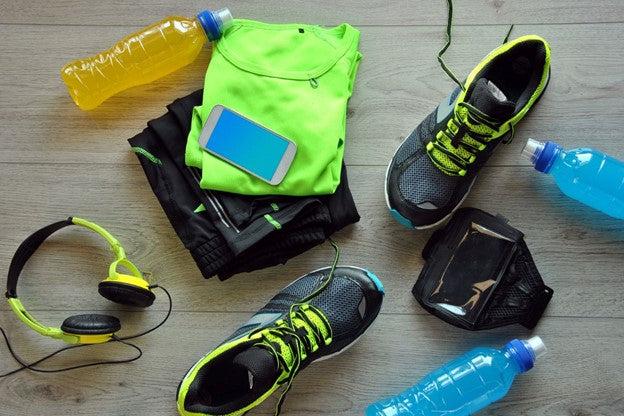The Ultimate Guide to Running Clothes by Temperature
Find the perfect running clothes for any temperature! Stay comfortable and perform your best with expert tips on layering for hot, cold, and mild weather.
The Ultimate Guide to Running Clothes by Temperature: Dressing for Comfort All Year Long
Running is one of the most accessible yet rewarding forms of exercise, though it does take some finesse to make the weather work to your advantage. Be it a frigid winter morning, a sultry summer afternoon, or just a rainy spring one, what you wear running makes all the difference in the world in comfort and performance. The secret to great runs all year long is knowing exactly how to modify your wardrobe with temperature changes.
Below, Lamp Post breaks down what to wear in running clothes by temperature and weather conditions so you can keep moving forward no matter what the forecast says.
1. Running Clothes in Cold Weather (Below 50°F / 10°C)
To say the least, it is challenging to go running in cold weather; however, this kind of running is one of the most invigorating forms of running there is-for those who have proper gear.
Your choice of attire becomes very important when temperatures become cold-your body operates much harder for a normal body temperature-and help in ensuring that a runner's performance and comfort levels are tip-top. This will be your secret to stay warm, though not hot enough, in frigid conditions: layer up. You can change your gear depending on heating up your body on the run.

1.1. Base Layer: The Power of Moisture-Wicking Material
Wear a moisture-wicking base layer, so the sweat doesn't freeze as it cools. Long sleeve tops or thermal tights in fabrics which wick - such as polyester or merino wool - will efficiently move moisture off your skin. It's also warming but not really bulky.
Recommend Product: Moisture Wicking Tee Shirt Long Sleeve
1.2. Mid Layer: Insulation
Insulate yourself with an insulating mid-layer, which might be a fleece or a thermal jacket. This keeps the heat on your body without preventing it from breathing. Take those with zippers for easy opening should the need to cool down suddenly arise.
Recommend Product: Lightweight Full-Zip Hooded Workout Jacket

1.3. Outer Layer: Protection from Wind and Rain
A windproof and water-resistant outer layer will be needed for cold conditions: a lightweight, breathable wind jacket or vest offers protection from the wind without overheating. For snowy and wet running, a water-resistant material will block off wet conditions, so look out for jackets that provide this.
Recommend Product: Waterproof Jacket Women Warm Outdoor Winter Jacket
1.4. Accessories: Stay Warm & Protected
● Gloves and Hat: Fleece or wool gloves for running will work fine without hindering movement. A thermal hat or beanie keeps the cold wind off of the head and ears.
● Socks: For cold weather, thick socks in merino wool or synthetic blend will be great. This is because wool provides very good heat insulation and at the same time allows moisture to evaporate through its pores to avoid moisture build-up close to the skin for dryness and comfort of your feet.
● Running Shoes: In cases of running through snow or super cold conditions, select shoes with an addition for insulation. This will help with waterproofing from moisture seepage into the feet.
Pro Tip: Wear running tights with thermal fabric under below-freezing temperatures to help keep the chill off your legs. And, of course, dress in layers, as it always is much easier to take clothes off than put them on while running.
2. Running Clothes in Mild Weather (50-65°F / 10-18°C)
Although you encounter mild temperatures for perfect running conditions, it is best that you pay closer attention to your body acclimatizing to the environment. Indeed, a temperature range can be perfect; then wear breathable and layered clothes as it has great potential to warm you up easily through running.

2.1. Top Layer: Lightweight Shirts or Jackets
During this range of temperature, you do not require the extra use of heavy insulation. You may wear a long-sleeved, wicking shirt during mild weather. If it is on the warmer end of that spectrum, a short-sleeved shirt will do, in breathable, wicking fabric such as polyester or nylon. If it is one of those crisp, cool mornings, wear it over a lightweight jacket or vest you can easily remove when you warm up.
Recommend Product: Women’s Athletic Jackets Lightweight UV Protection
2.2. Bottom Layer: Comfortable Tights or Shorts
Wear light running tights or shorts. If you want a bit of extra coverage, or if the temperature is starting to get down to slightly cooler, wear a pair of running tights from spandex and nylon combinations. For warm temperatures, find shorts with the most comfort and fabric with moisture-wicking properties that allow you to remain cool and dry throughout your runs.
2.3. Socks and Shoes: The Right Fit for Comfort
For this kind of weather, normal running shoes and moisture-wicking socks are sufficient to keep your feet comfortable. Find socks made from a blend of synthetic materials or merino wool for comfort. As for shoes, breathable mesh or light training shoes will offer support and ventilation.
2.4. Accessories: Minimal but Necessary
● Hat/Headband: If you're running in the sun, then it should be breathable and one that doesn't let sunlight reach your eyes.
● Sunglasses: These would be a great sport pair, shielding your eyes from UV and helping with better visibility.

Pro Tip: Even though it's mild, make sure to dress in layers. You'll often find yourself overheating with too much gear in this temperature range.
3. Running Clothes in Warm Weather (65-85°F / 18-29°C)
During the hot seasons, your attire should target sufficient ventilation with effective moisture management. Fabrics utilized during the manufacture of running wear for warm weather need to provide such features to keep the human body cool and dry without overheating. One can note the breathable fabrics with their loose construction.

3.1. Top Layer: Breathable and Light
Choose lightweight, moisture-wicking short-sleeve shirts or tank tops. This type of fabric will allow sweat to evaporate while keeping you cool and dry. Technical fabrics for CoolMax and Dri-FIT have been built in such a way to wick away the moisture, which will help you be comfortable during your run.
Recommend Product: Breathable Loose Fit Running T Shirt Short Sleeve
3.2. Bottom Layer: Lightweight Shorts or Skirts
Bottom wear can be breathable shorts or running skirts. Spandex or light synthetic blends that are wicking, and dry without limiting your full range of motion should be tried. Avoid thick or heavy fabric as it could make running cumbersome on a warm day.
Recommend Product: Lightweight Athletic Running Skirts
3.2. Socks and Shoes: Keep It Light
Wear thin socks, preferably made from moisture-wicking material to let your feet breathe during warm weather. Prepare shoes with mesh upper to increase airflow and prevent overheating of the feet while running. Breathable shoes with good grip are more essential for those who run on trails or rough paths.
3.4. Accessories: Stay Cool and Safe
● Cap or Visor: A light, loose cap or visor admits ventilation to carry heat away from the head while offering protection to face and eyes from sun.
● Sunglasses: These will be used to protect the eyes from damage by UV and glare.
Pro tip: Hydration is your friend on super-hot days. Either run with water on your person or route your runs to include water stations. On longer runs, the hydration belts and handheld water bottles are pretty great accessories.

4. Running in Hot Weather (Above 85°F / 29°C)
Running in hot weather is brutal if one isn't prepared. Make sure that clothes ranked for high breathability, wicking capability, and sun protection come first regarding comfort and safety.
4.1. Top Layer: Ultra-Lightweight Materials
Go for super lightweight wicking tops that dry very fast. For very hot days, wear a tank top or singlet for an absolutely cooler run because of the maximum air circulation on your body.
Recommend Product: ICTIVE Workout Tank Tops for Women

4.2. Bottom Layer: Loose-Fitting Shorts
Running shorts or skirts with a lightweight, breathable fabric are your best bet for extreme heat. Look for options that provide good ventilation and don't restrict movement.
Recommend Product: Running Shorts Workout Athletic
4.3. Socks and Shoes: Extra Cooling Power
For extremely hot days, avoid heavy socks or shoes. Wear lightweight socks of wicking material for dryness. Running shoes with mesh uppers will help your feet to breathe and not sweat excessively.
Recommend Product: Coolmax Wicking Compression Ankle Support Socks Women

5.4. Accessories: Maximum Sun Protection
● Cap or Visor: A wide-brimmed cap or visor will protect your face from the sun while a breathable fabric cap will keep the top of your head cool.
● Sunglasses: These are recommended, with UV protection against strong sun rays.
● Hydration Gear: Never go into the field without water in hot season conditions. Either a hydration belt or handheld water bottle, or even hydration vest, is all that is needed during long-distance running.
Pro Tip: The best way not to get heat running injury is just not to run during the high heat of the day. This is usually between 10 A.M and 4 P.M. Wherever possible, run very early in the morning or later in the evening when it is much cooler.
5. Conclusion
Whatever the weather or temperature, proper running attire will help to ensure a comfortable run. Be it from piling up on the chilly ones or wearing thin to remain cool, it is dressing appropriately that matters. With Lamp Post keeping you in the know for each and every run with tips and tricks and updates in running gear, get out there, stay motivated, and keep moving forward!




